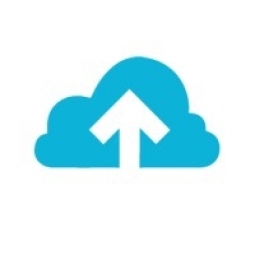Technology Category
- Functional Applications - Computerized Maintenance Management Systems (CMMS)
- Platform as a Service (PaaS) - Application Development Platforms
Applicable Industries
- Buildings
- Retail
Applicable Functions
- Facility Management
- Maintenance
Use Cases
- Building Automation & Control
- Inventory Management
About The Customer
The customer is a large restaurant chain in North America, committed to creating a welcoming and consistent guest experience across all their cafés. They were looking for ways to streamline their facilities management processes to improve the overall customer and employee experience. The customer also uses ServiceNow™ for their IT requests and other business operations like risk management, food safety, and supply chain. They needed a system for tracking corporate facility and building usage, and a streamlined way for employees to book workspaces for their return-to-the-workplace initiative.
The Challenge
The client, a large restaurant chain in North America, was facing challenges in managing the maintenance of their cafés. They were primarily using spreadsheets for this task, and the process varied depending on the size and scope of the tasks. Smaller repairs and maintenance needs were handled directly by the general managers of each café, which involved spending time on the phone coordinating with equipment vendors. Larger repairs and remodels required the involvement of the facilities team for bids, reviews, and vendor management. The company also needed a system for tracking corporate facility and building usage, and a streamlined way for employees to book workspaces for their return-to-the-workplace initiative.
The Solution
The client chose Nuvolo, a platform built on ServiceNow™, to streamline their facilities management processes. The platform allowed the client to extend their existing ServiceNow™ instance into other lines of business, connecting different groups through technology. Nuvolo provided a customizable platform that could be modified and expanded to meet the client's needs. The facilities team used Nuvolo to streamline their work order and vendor management processes. Managers could submit work orders, which were automatically dispatched to vendors. The facilities team could intervene directly if any issues arose, communicating with vendors and technicians through the platform. Nuvolo also helped the client facilitate its return-to-the-workplace initiative by allowing employees to reserve spaces and enabling teams to monitor utilization data.
Operational Impact
Quantitative Benefit

Case Study missing?
Start adding your own!
Register with your work email and create a new case study profile for your business.
Related Case Studies.

Case Study
Energy Saving & Power Monitoring System
Recently a university in Taiwan was experiencing dramatic power usage increases due to its growing number of campus buildings and students. Aiming to analyze their power consumption and increase their power efficiency across 52 buildings, the university wanted to build a power management system utilizing web-based hardware and software. With these goals in mind, they contacted Advantech to help them develop their system and provide them with the means to save energy in the years to come.

Case Study
Intelligent Building Automation System and Energy Saving Solution
One of the most difficult problems facing the world is conserving energy in buildings. However, it is not easy to have a cost-effective solution to reduce energy usage in a building. One solution for saving energy is to implement an intelligent building automation system (BAS) which can be controlled according to its schedule. In Indonesia a large university with a five floor building and 22 classrooms wanted to save the amount of energy being used.

Case Study
Improving Production Line Efficiency with Ethernet Micro RTU Controller
Moxa was asked to provide a connectivity solution for one of the world's leading cosmetics companies. This multinational corporation, with retail presence in 130 countries, 23 global braches, and over 66,000 employees, sought to improve the efficiency of their production process by migrating from manual monitoring to an automatic productivity monitoring system. The production line was being monitored by ABB Real-TPI, a factory information system that offers data collection and analysis to improve plant efficiency. Due to software limitations, the customer needed an OPC server and a corresponding I/O solution to collect data from additional sensor devices for the Real-TPI system. The goal is to enable the factory information system to more thoroughly collect data from every corner of the production line. This will improve its ability to measure Overall Equipment Effectiveness (OEE) and translate into increased production efficiencies. System Requirements • Instant status updates while still consuming minimal bandwidth to relieve strain on limited factory networks • Interoperable with ABB Real-TPI • Small form factor appropriate for deployment where space is scarce • Remote software management and configuration to simplify operations

Case Study
Powering Smart Home Automation solutions with IoT for Energy conservation
Many industry leaders that offer Smart Energy Management products & solutions face challenges including:How to build a scalable platform that can automatically scale-up to on-board ‘n’ number of Smart home devicesData security, solution availability, and reliability are the other critical factors to deal withHow to create a robust common IoT platform that handles any kind of smart devicesHow to enable data management capabilities that would help in intelligent decision-making









